Looker
PRODIn this section, we provide guides and references to use the Looker connector.
Configure and schedule Looker metadata and profiler workflows from the OpenMetadata UI:
Ingestion Deployment
To run the Ingestion via the UI you'll need to use the OpenMetadata Ingestion Container, which comes shipped with custom Airflow plugins to handle the workflow deployment. If you want to install it manually in an already existing Airflow host, you can follow this guide.
If you don't want to use the OpenMetadata Ingestion container to configure the workflows via the UI, then you can check the following docs to run the Ingestion Framework in any orchestrator externally.
Run Connectors from the OpenMetadata UI
Learn how to manage your deployment to run connectors from the UIRun the Connector Externally
Get the YAML to run the ingestion externallyExternal Schedulers
Get more information about running the Ingestion Framework ExternallyRequirements
There are two types of metadata we ingest from Looker:
- Dashboards & Charts
- LookML Models
For the project metadata being ingested:
- We get the actual LookML Project an Explore or View is developed in.
- For Dashboards, we use the folder name from the UI, since there is no other hierarchy involved there.
In terms of permissions, we need a user with access to the Dashboards and LookML Explores that we want to ingest. You can create your API credentials following these docs.
However, LookML Views are not present in the Looker SDK. Instead, we need to extract that information directly from the GitHub repository holding the source .lkml files. In order to get this metadata, we will require a GitHub token with read only access to the repository. You can follow these steps from the GitHub documentation.
The GitHub credentials are completely optional. Just note that without them, we won't be able to ingest metadata out of LookML Views, including their lineage to the source databases.
Moreover, Looker lineage only supports LookML views configured with sql_table_name and derived_table in plain SQL. We do not yet support liquid variables.
Metadata Ingestion
1. Visit the Services Page
Click Settings in the side navigation bar and then Services.
The first step is to ingest the metadata from your sources. To do that, you first need to create a Service connection first.
This Service will be the bridge between OpenMetadata and your source system.
Once a Service is created, it can be used to configure your ingestion workflows.
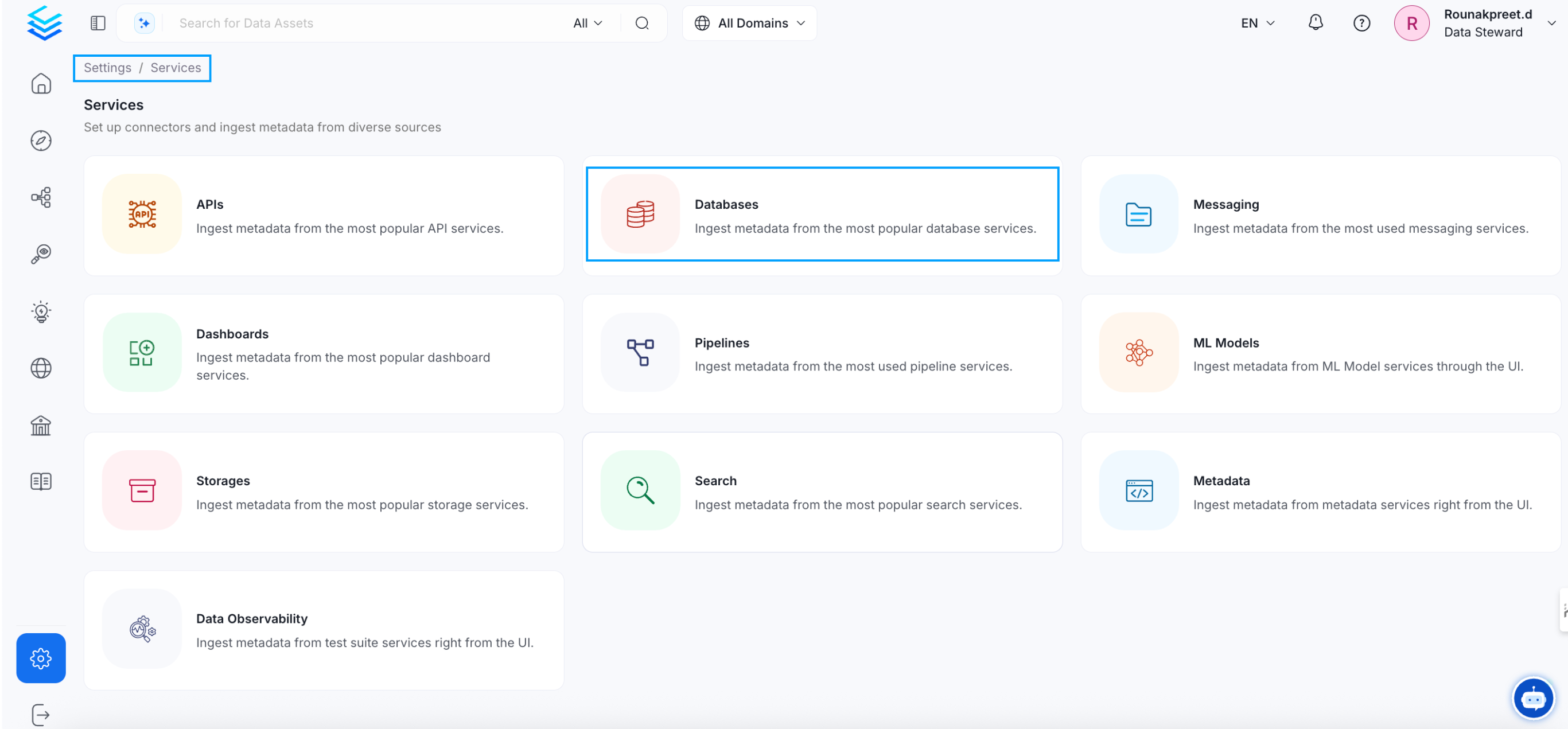
Select your Service Type and Add a New Service
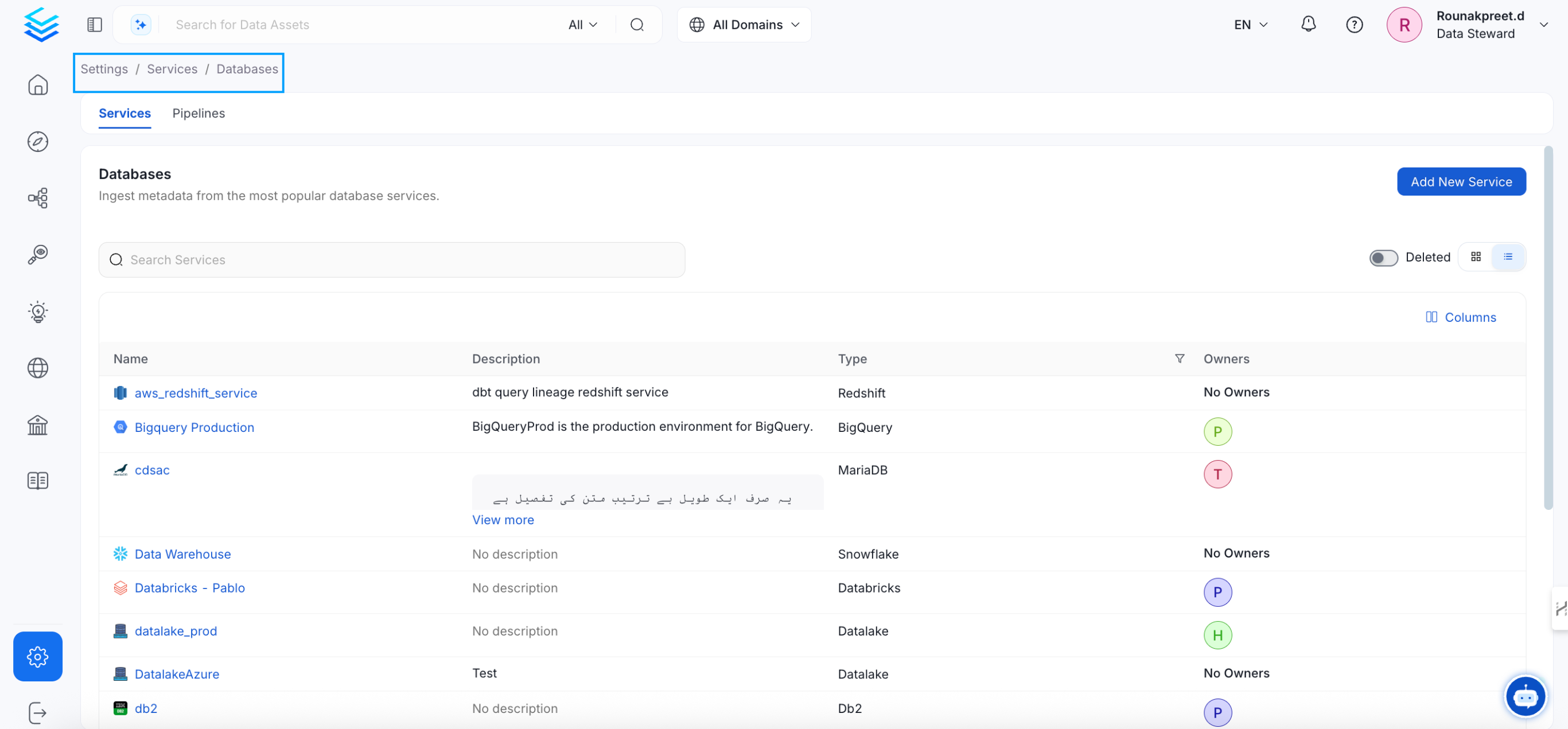
Add a new Service from the Services page
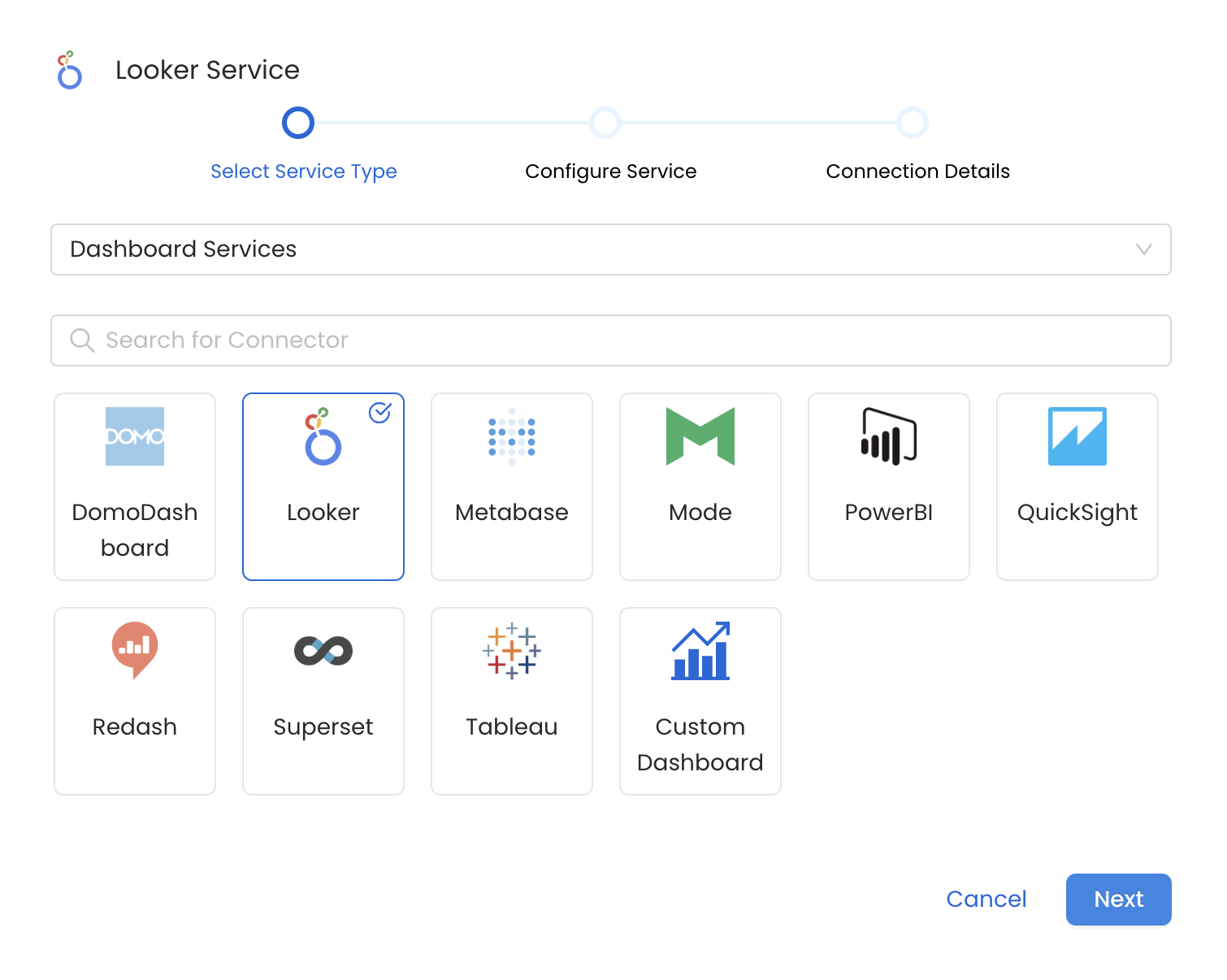
Select your Service from the list
4. Name and Describe your Service
Provide a name and description for your Service.
Service Name
OpenMetadata uniquely identifies Services by their Service Name. Provide a name that distinguishes your deployment from other Services, including the other Looker Services that you might be ingesting metadata from.
Note that when the name is set, it cannot be changed.
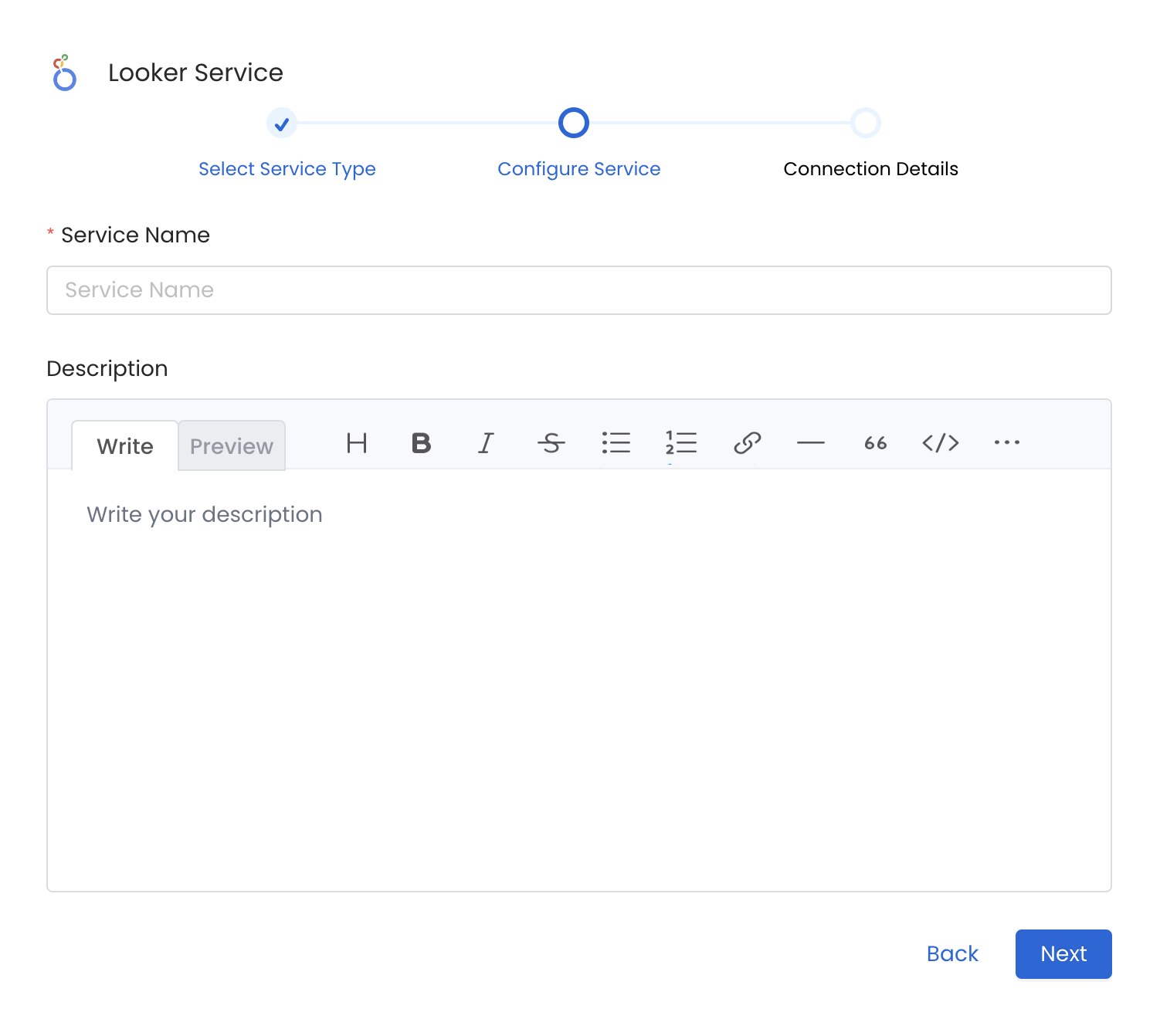
Provide a Name and description for your Service
5. Configure the Service Connection
In this step, we will configure the connection settings required for Looker.
Please follow the instructions below to properly configure the Service to read from your sources. You will also find helper documentation on the right-hand side panel in the UI.
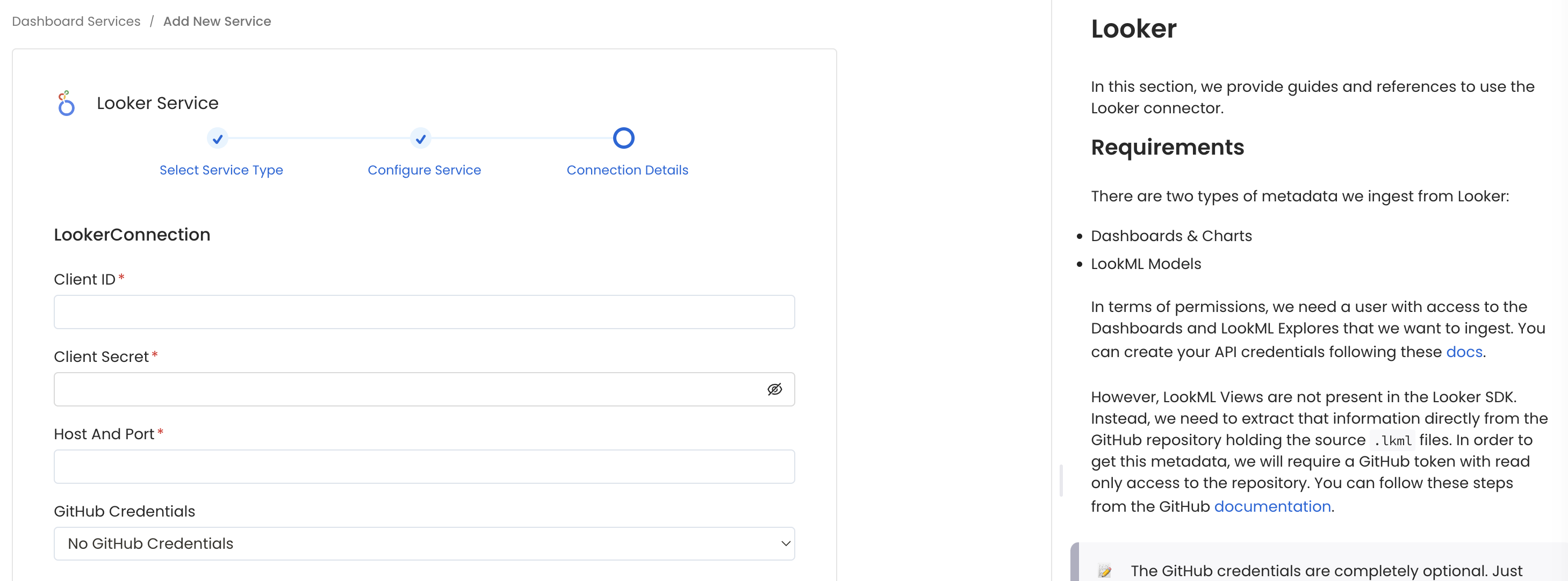
Configure the Service connection by filling the form